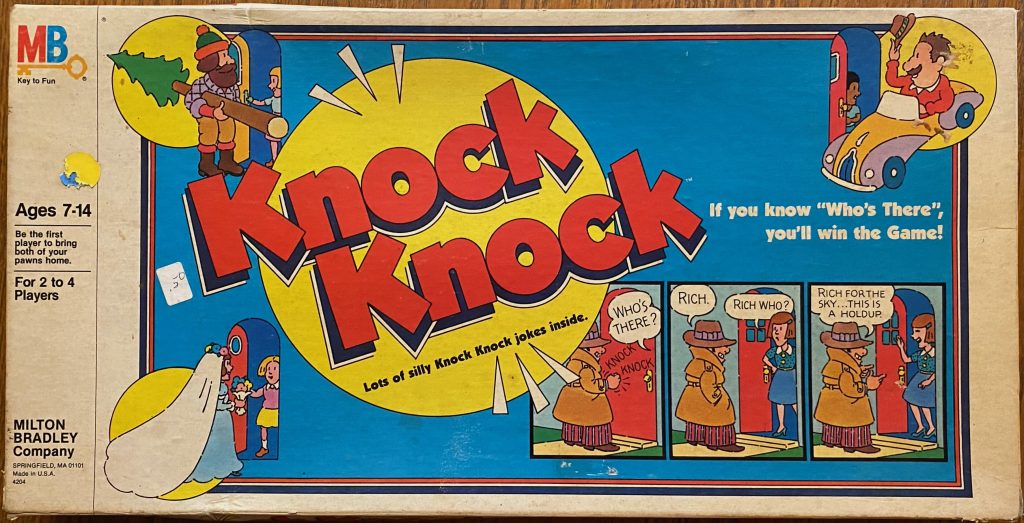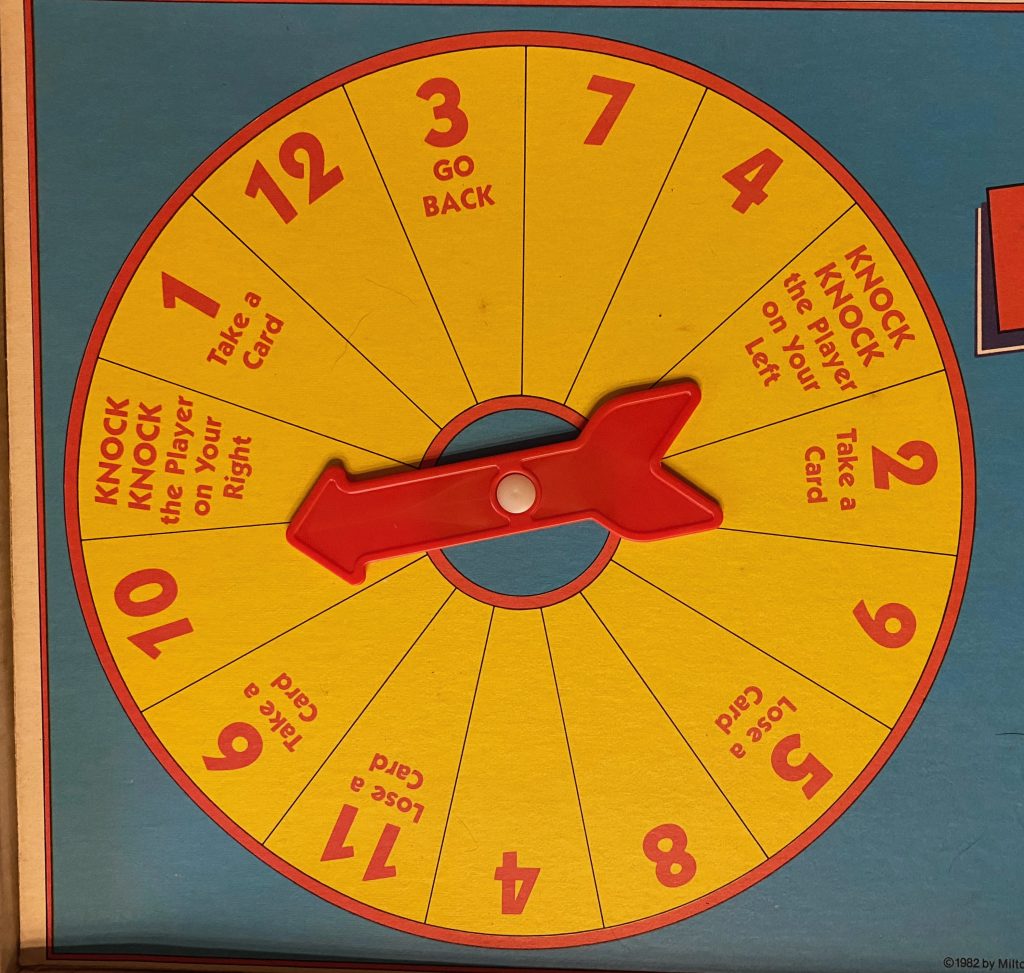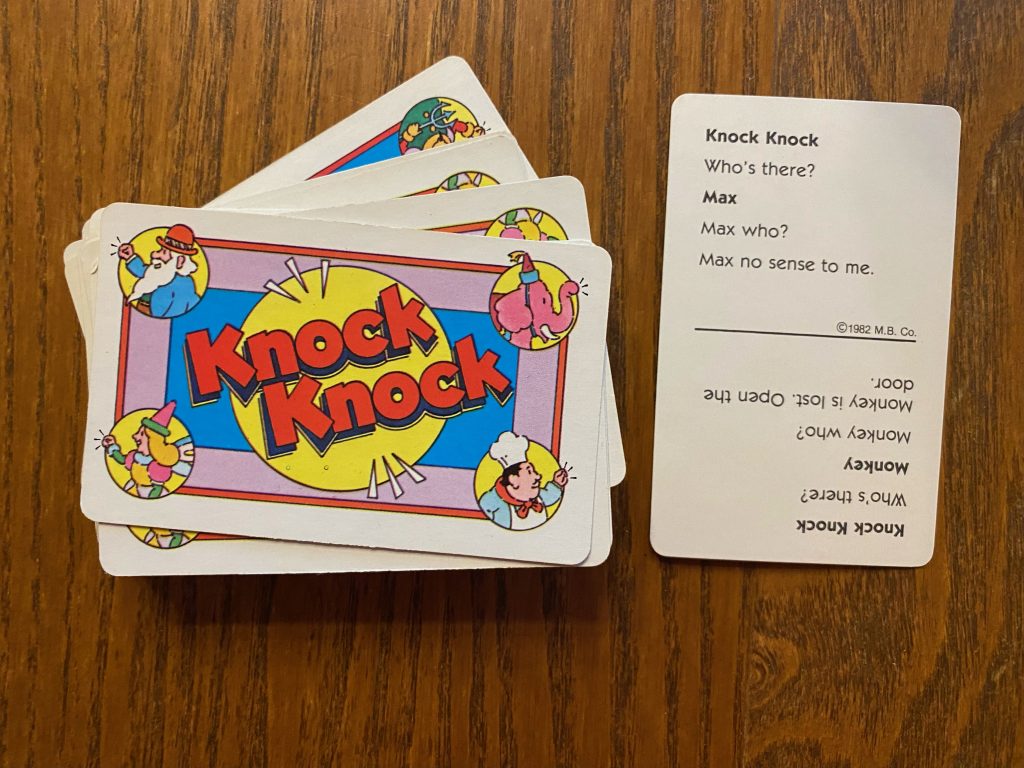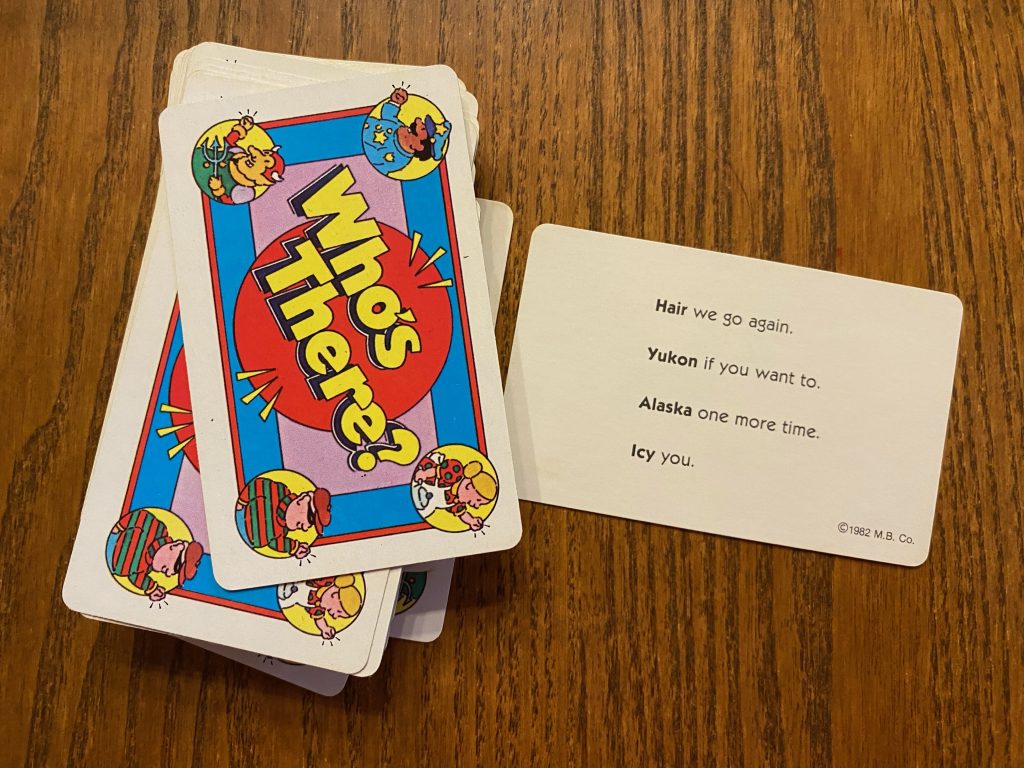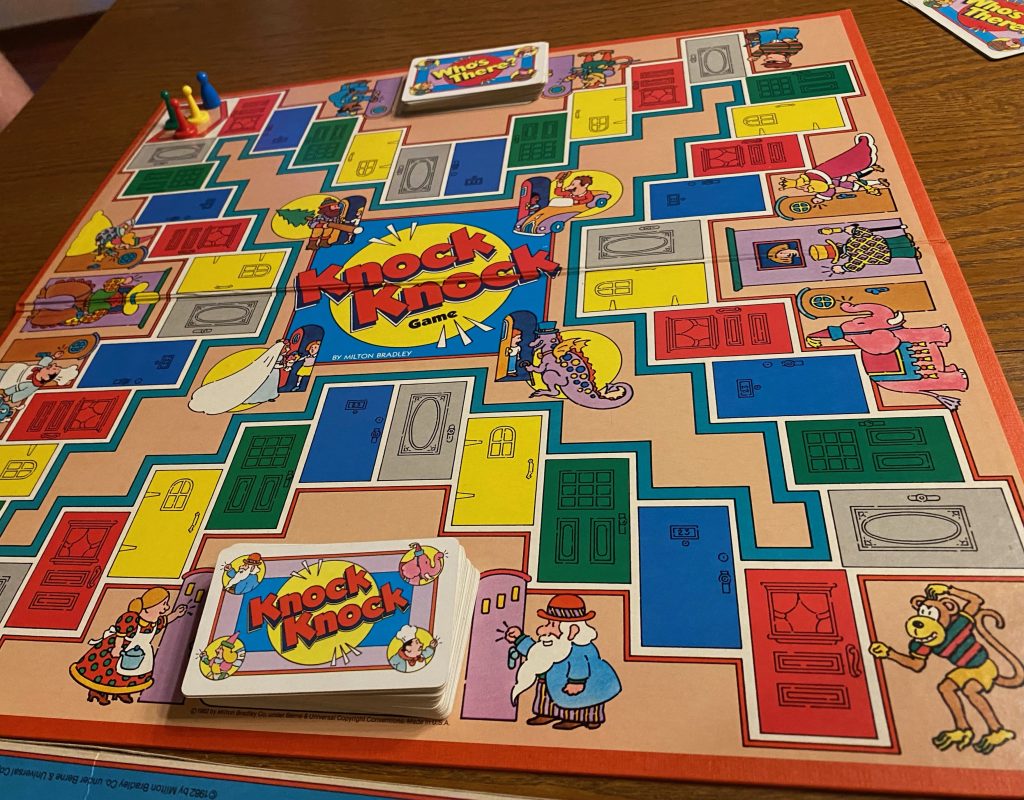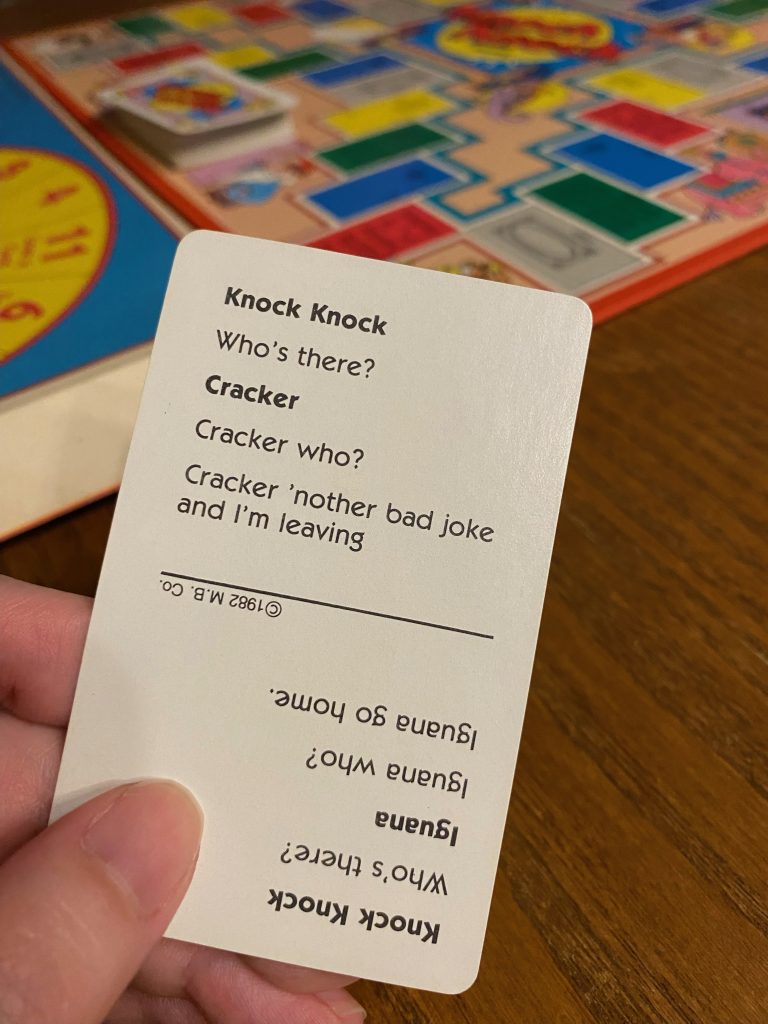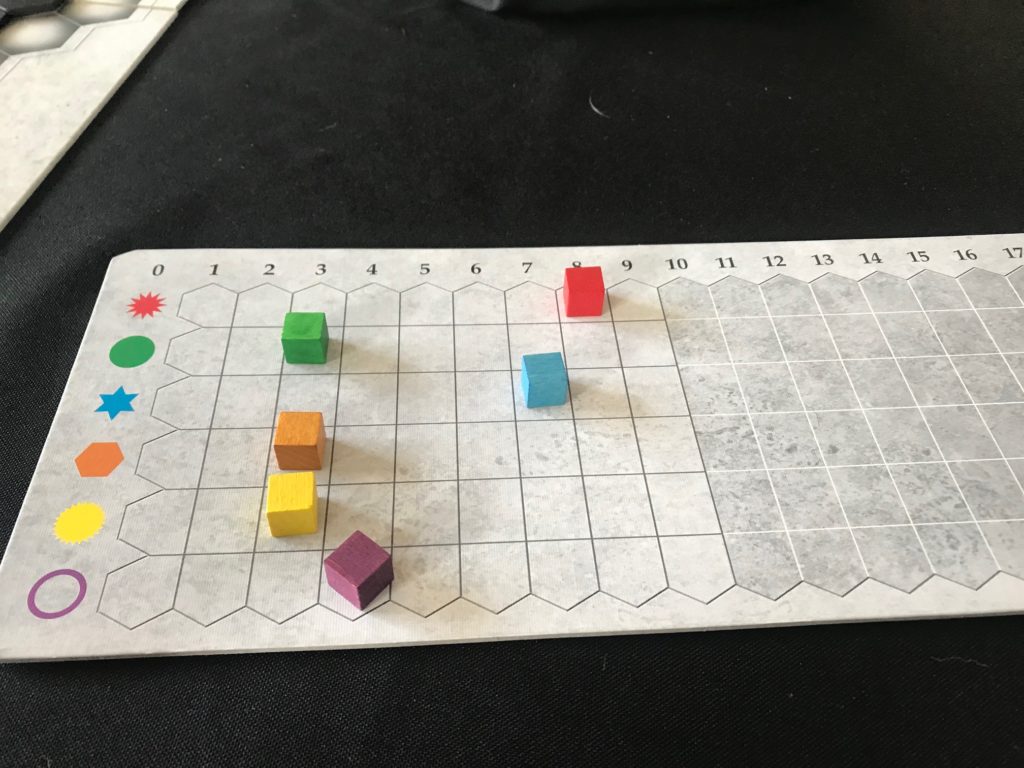Review: idiomaddict
Publisher: Marbles the Brain Store
Year: 2013? per BGG
Players: 4 or more
Tagline: PLAYING IS AS SIMPLE AS SHORTCAKE
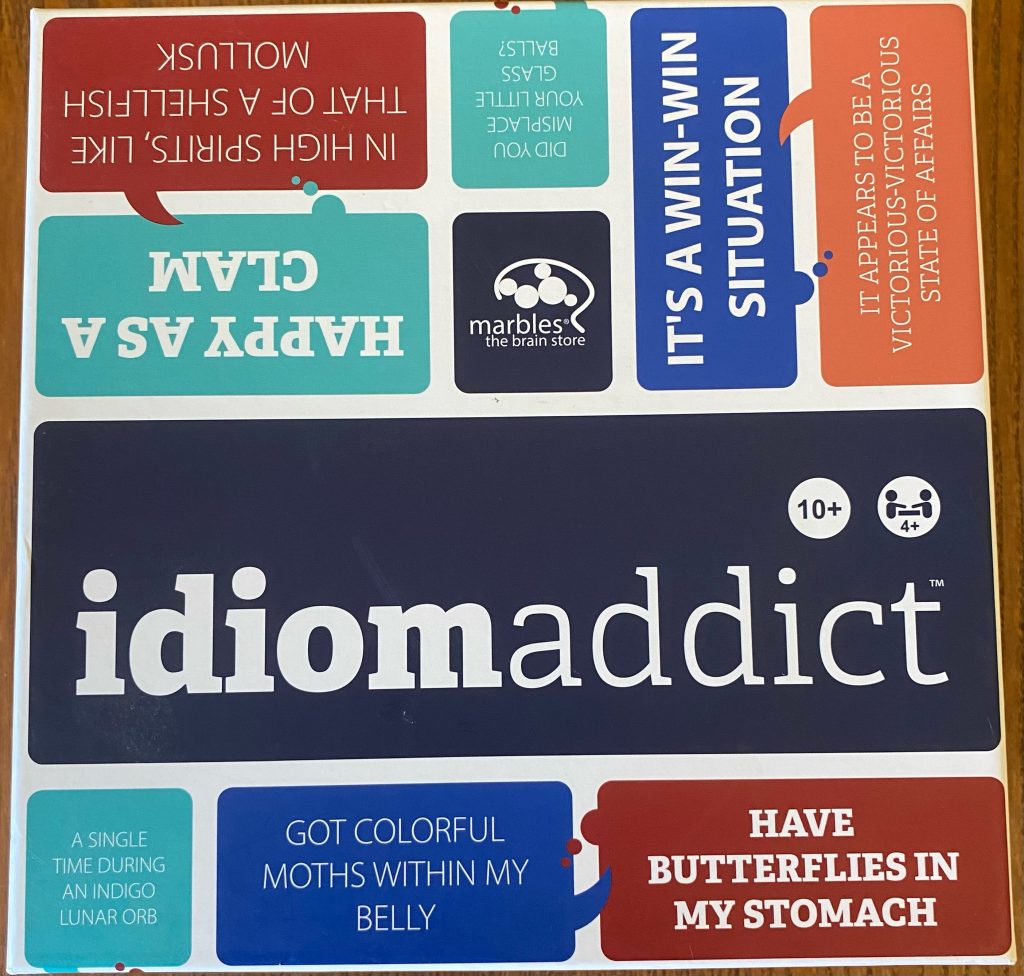
how we met
I found idiom addict at my local town thrift shop, which doesn’t always have good games but when it does, they are quite random. If you are not sure what an idiom is, the box cover should remove all doubt since it is plastered with them. In fact, the game doesn’t really have a tagline I just used one of the examples from the box.
I love word games, and this one didn’t cost an arm and a leg. idiom addict was coming home with me.
how it plays
Players divide into teams of 2. The goal is to guess the common idiom based on the clues given, usually like the common phrase was fed through a thesaurus. (Example: the clue Punt the pail would become Kick the bucket) Teams take turns rolling the die with potential outcomes:
- Synonym Twist is like an all play where each team has one representative guess the synonym based on provided clues. The first player to correctly guess two different synonyms gets to move their team pawn two spaces.
- X1 or X2 then the opposing team will read your team Mixed Messages cards for 30 seconds. Guess as many as you can in the time limit. At the end, multiply your correct number of guesses by 1 for X1 and 2 for X2, and move your team pawn that many spaces on the board.
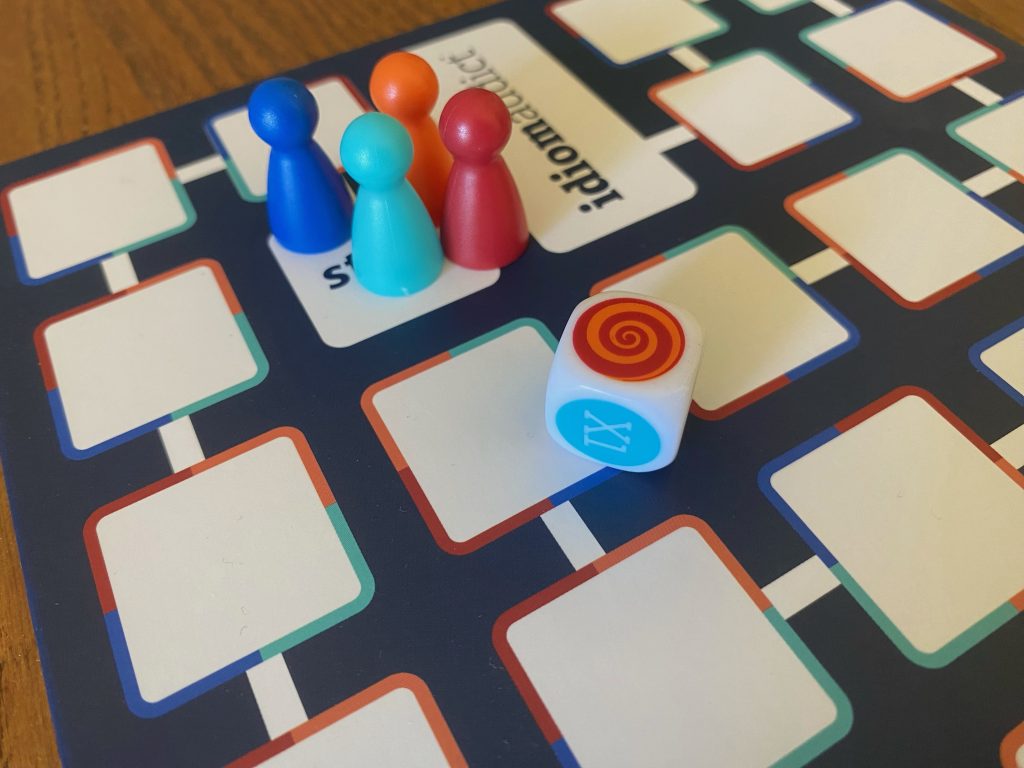
Once a team’s pawn reaches the Idiom Addict end of the board, they must successfully win one last Synonym Twist to take the cake!
how it went
I first played idiom addict with my sister, Jaime, also a lover of word games. We played 2 player, and for the record 2 players vs 2 teams is six of one, half dozen of the other. 2 player works fine as long as you can drag someone else to the table to read out the Synonym Twist challenges to you. One of my fondest memories of playing was when one of us rolled Synonym Twist and we simultaneously whined, “Aaaaaron!” as my poor brother in law tried to do anything else for five minutes together. He’s a great sport.
In that initial play, Jaime soundly whipped me. She was ahead most of play and ultimately won! I put up a good fight though. We are both pretty good at word games.
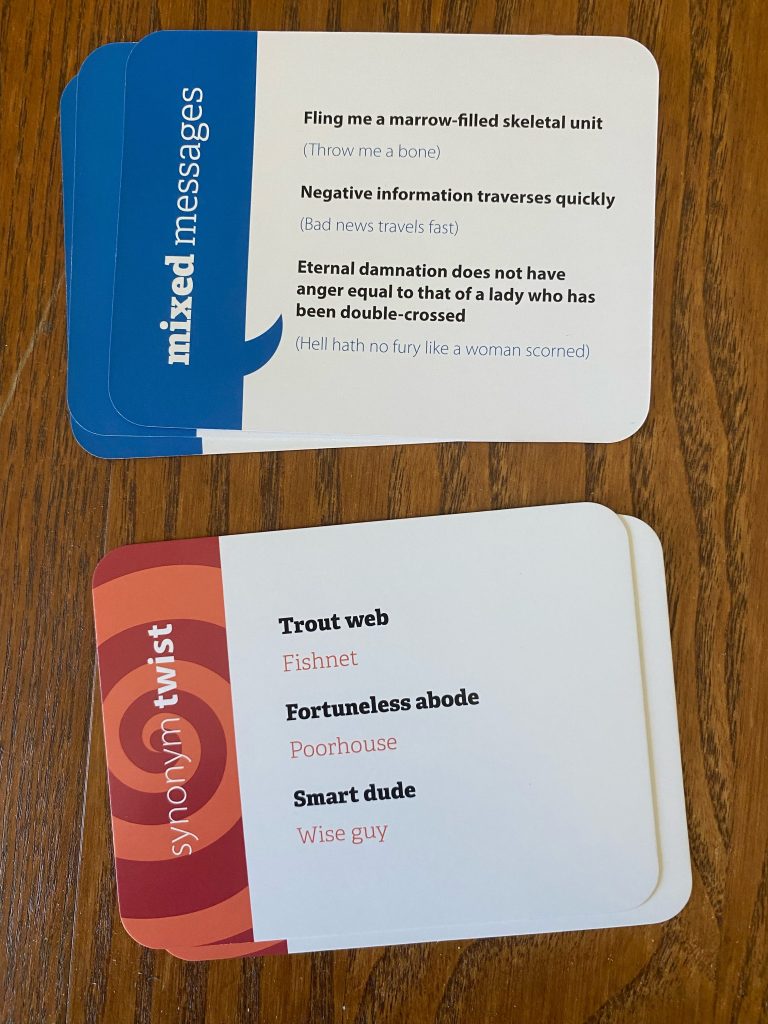
The next time I played idiom addict was with a group of friends in a conference room. The players ranged from my usual gaming group, with John insistent he would be terrible at it, to friends that I don’t get to game with very often. One is Polish, and I was worried how the cards would translate, if at all.
But the thing about idioms is, they are as ubiquitous as oxygen. They are a piece of cake. In the large group setting we had, we quickly abandoned the board, teams and official rules for just taking turns individually. I imagine this happens with idiom addict a lot.
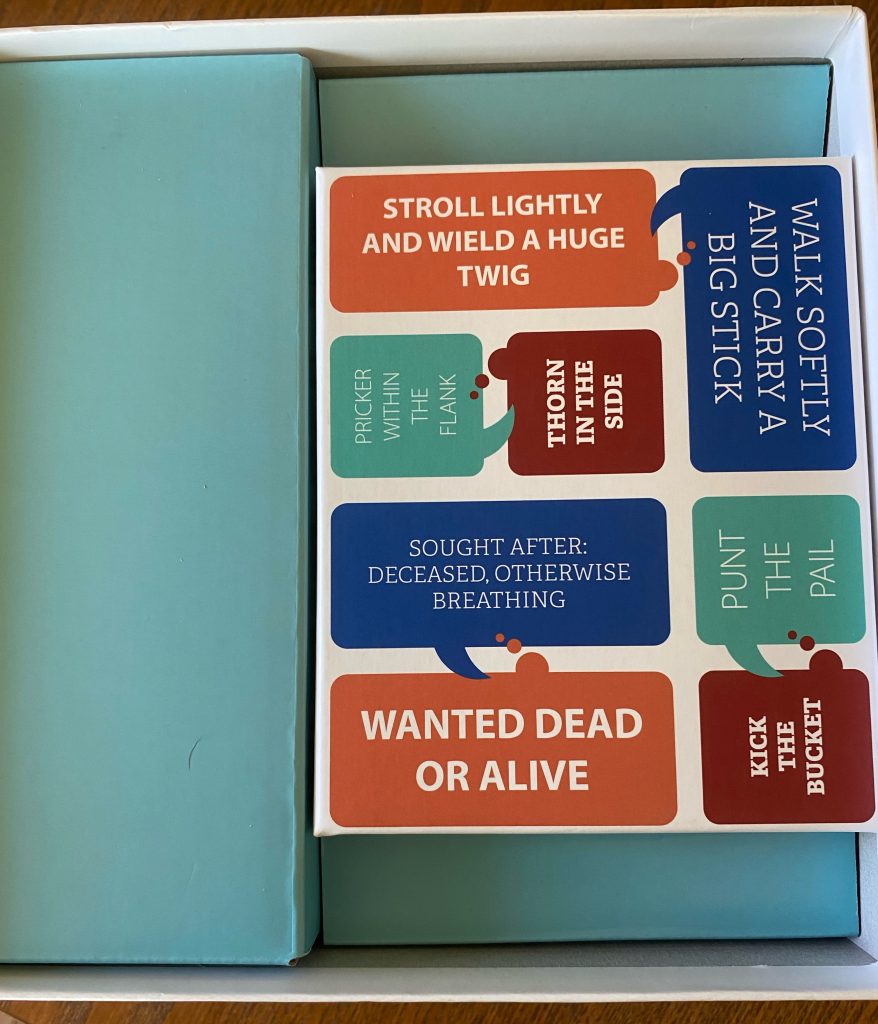
And, this type of casual play in a large group is a good rule of thumb. When players are in teams, play becomes a race to answer first. When players get a chance to answer on their own, the game is more enjoyable, more chill and more inclusive. If keeping score is important, just let people keep the cards they answer. Even if people don’t win, at least they got to play.
play or pass
If you are a fan of word games, don’t get cold feet over picking up idiom addict, especially at thrift. The official rules are for the birds in a large group, but there is still idiom fun to be had with the cards. Most of my friends that didn’t think they would like idiom addict ended up having fun with it. I don’t think the replayability is very high, so I am donating mine to a local brewery for others to enjoy.
